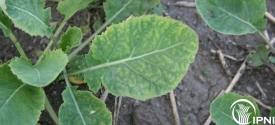Field Pea
Elevated atmospheric CO2 affects growth and yield which then affect processes controlling the supply and losses of N to sustain these increases. This research was undertaken to measure the effects of ...
 More Profit from Crop Nutrition: Micronutrient Survey
More Profit from Crop Nutrition: Micronutrient SurveyA scoping study to develop a risk assessment for micronutrient deficiency in the grains industry.
The Australian Grains Free Air Carbon Dioxide Enrichment (AGFACE) facility was established to compare wheat growth, yield, and development under ambient atmospheric carbon dioxide (a CO2 ~380 ppm) and ...
 Better Fertilizer Decisions for Crops
Better Fertilizer Decisions for CropsThe collation of 5000 field experiments on crop fertilizer responses from across Australia.
A site at Froid, MT was selected for the study, with a background soil P level of 19 mg P/kg of soil. A split-plot design was used with tillage (ZT vs CT) as the main plot, and crop and P rate as the ...
A tillage by rotation study evaluated after 11 years to determine if the use of no-till had led to nutrient stratification in the plots. The results of this study indicate that nutrients did become st ...
Crops were planted in flats of soil are prepared to simulate a seed-bed and a low-disturbance opener configuration (10% seed bed utilization). Eleven commonly grown Saskatchewan crops (wheat, barley, ...
The adoption of no-till seeding systems in western Canada has been driven by a variety of factors, moisture conservation and economic efficiency likely the major ones. This project was conducted to ev ...
A study to identify mineral nutrient removal in the harvested portion of crops grown in western Canada.
Assess the availability, release and use of P and K from field pea and fababean residues, to subsequest cereal crops.
Barley and canola was grown at 46 sites in Alberta to evaluate response to P fertilizer and determine the ability of various soil test P methods to predict crop response.

